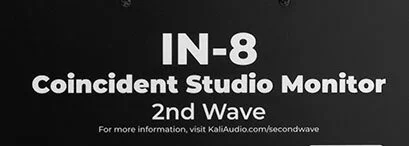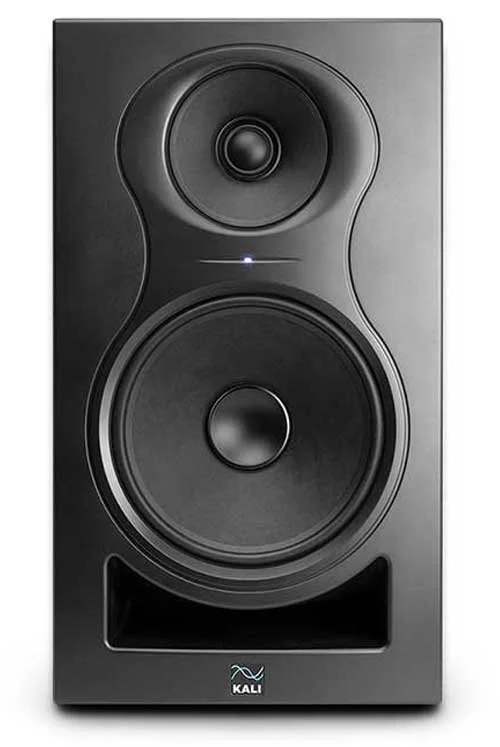2nd Wave
Kali Audio’s 2nd Wave is our second generation of loudspeaker products, which centers around a new amplifier platform, upgraded transducers, and improved construction processes. Click here for more information on the improvements we’ve made in the 2nd Wave. 2nd Wave products are clearly marked as such on the product packaging and the back of the products.
You can find this marking under the product name:
You can also tell 1st Wave products from 2nd Wave products by looking at the transducers. 1st Wave monitors have a dark black, shiny finish, while 2nd Wave monitors have a lighter matte finish:
1st Wave
2nd Wave
All of Kali’s studio monitors now use our 2nd Wave technology. To tell whether a speaker you’re looking at is 1st or 2nd Wave, you can use the guide above, or you can also reference the serial number. The 3rd-9th digits of the serial number are the date of manufacture in MMDDYY format. So an IN-8 with serial number “KL2011202003675” would be made on 11-20-20, or November 20, 2020.
All WS-6.2s, IN-5s, UNF (Ultra Nearfield), and SM-Series speakers are 2nd Wave. None of these speakers have a first wave version.
LP-Series speakers (LP-6, LP-6 White, and LP-8) made before March 20, 2021 are all 1st Wave. LP-Series speakers made after May 1, 2021 are all 2nd Wave.
All IN-8s made before November 21, 2020 are 1st Wave. All IN-8s made after March 1, 2021 are 2nd Wave.
All WS-12s made before November 1, 2023 are 1st Wave. All WS-12s made after November 1, 2023 are 2nd Wave.
Although we’ve stopped making the original version, the user’s manual and specs can still be found at kaliaudio.com/product-history
The MVBT is our only remaining V1 product.
I have a 1st Wave product. Can I use components from a 2nd Wave product?
Unfortunately, in most cases: no. The transducers and amplifiers in all of our products are optimized for use with one another. Because both the transducers and amplifiers are new for our 2nd Wave, they will not work from one version to the other. The exception to this rule is the WS-12. Components are swappable between V1 and V2 units.
2nd Wave Improvements
More Sophisticated Limiters
For 3dB higher output with no risk of damaging the speakers.
12 dB Reduction in Amplifier Self Noise
2nd Wave monitors are dead quiet when not being used. You won’t hear any hiss or other electronic or mechanical noises even if the monitors are very close to you and your room is very quiet. And you’ll be able to handle sensitive applications like sound design with total confidence.
Natural Finish Driver Cones
Less material on the cone increases driver efficiency.
Improved Cabinet Construction
For better cosmetic longevity.
More Robust DSP
For smoother high frequency response
New Boundary EQ Tunings
To better address real-world use cases.
Input Sensitivity Lowered by 3 dB
For higher output from a given input signal.





